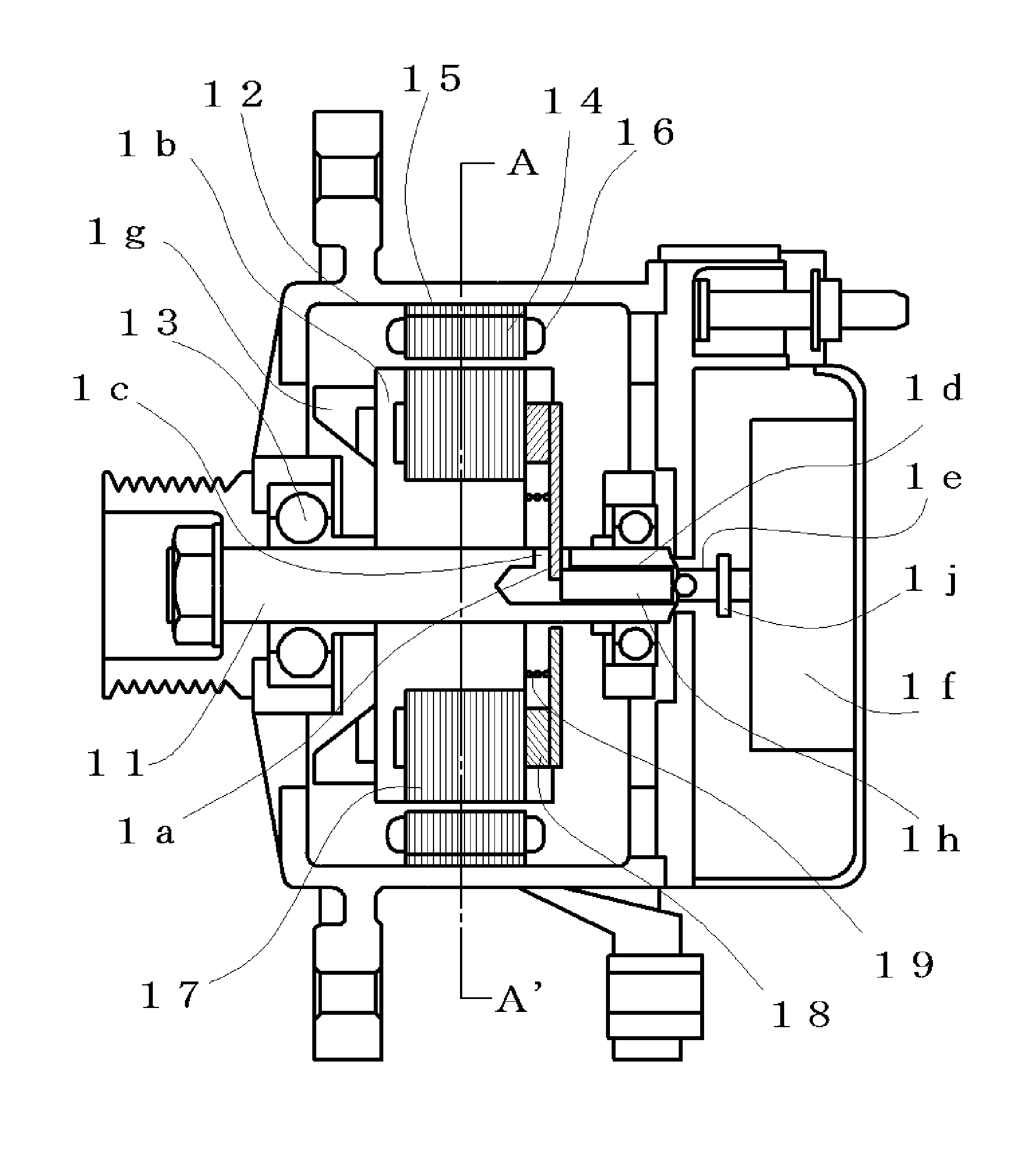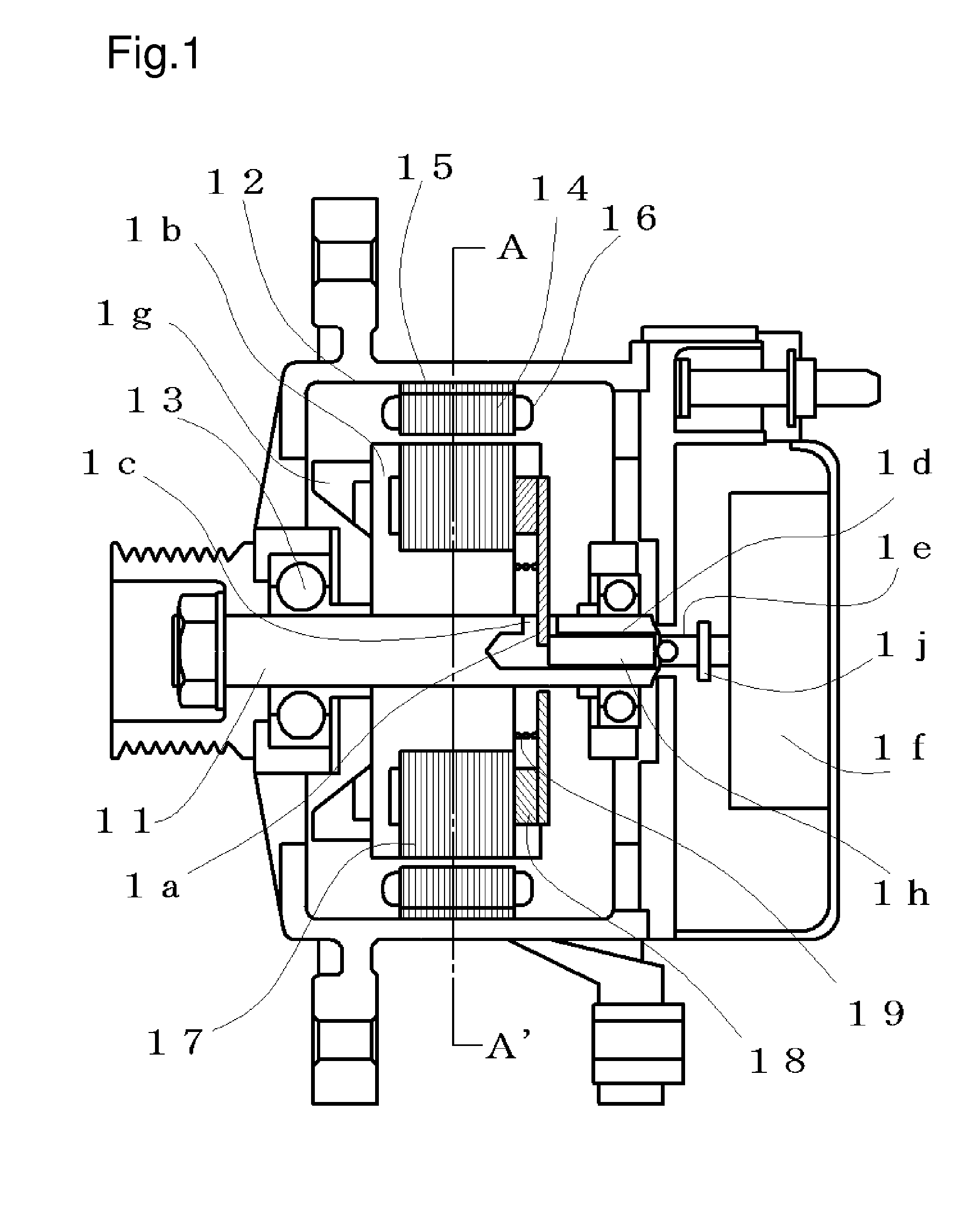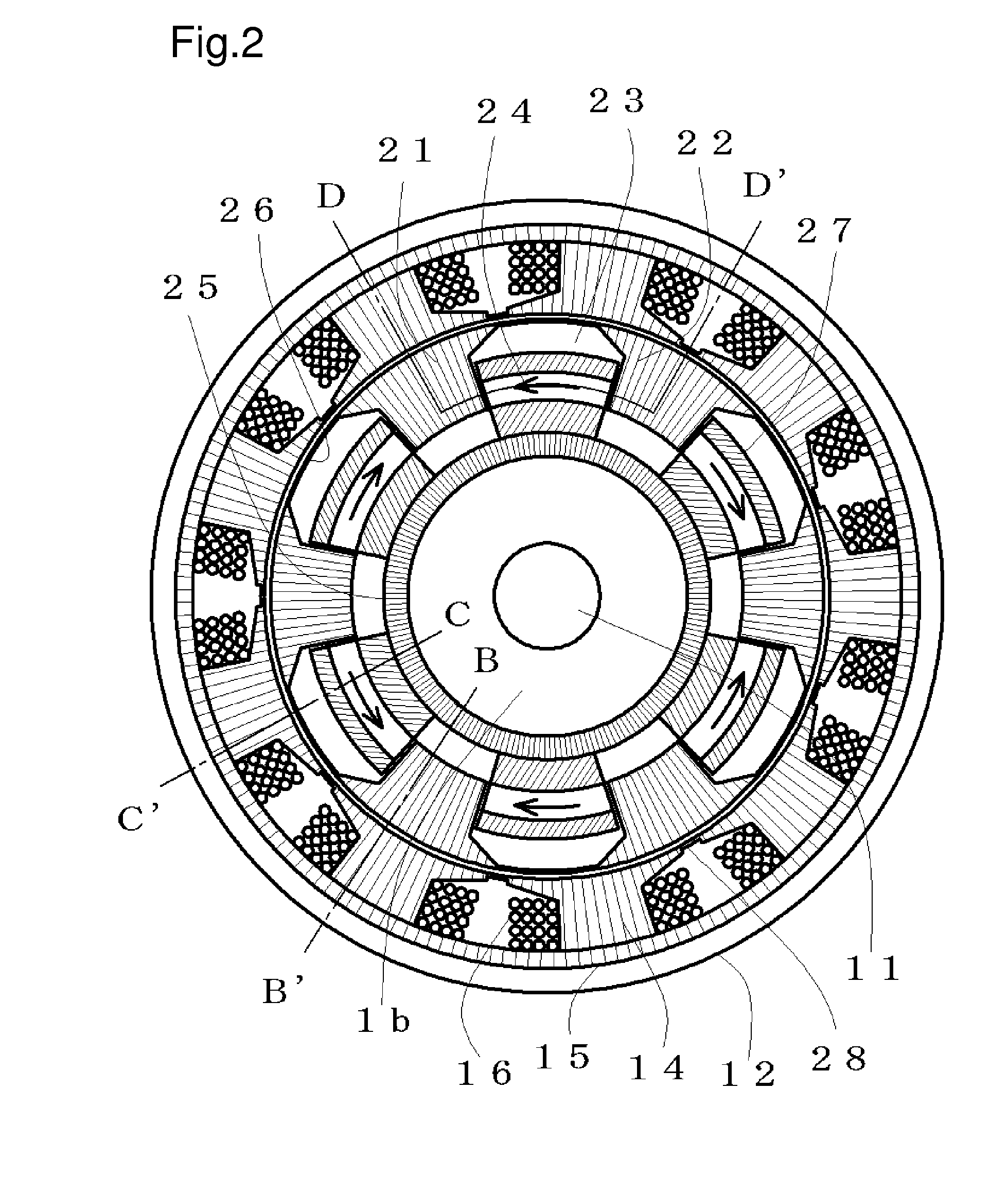Field controllable rotating electric machine system with flux shunt control
a technology of electric machine and flux shunt, which is applied in the direction of electric generator control, magnetic body, dynamo-electric converter control, etc., can solve the problems of large energy loss, difficult control of the system, and inability to obtain optimal power in a wide rotational speed range. achieve the effect of field weakening control
- Summary
- Abstract
- Description
- Claims
- Application Information
AI Technical Summary
Benefits of technology
Problems solved by technology
Method used
Image
Examples
first embodiment
[0097]As described above, in the rotating electric machine apparatus shown in FIGS. 1 to 7, it has been explained that by displacing the magnetic excitation part 18 axially, the magnetic flux flowing in the armature can be controlled. The first embodiment is a system for optimizing the output by controlling the magnetic flux amount, and the control method as the rotating electric machine system will be explained by using FIG. 8.
[0098]FIG. 8 shows a block diagram of the rotating electric machine system for controlling the field strength. In FIG. 8, the rotating electric machine apparatus 81 has an input 82 and an output 83, and a control device 85 controls the field strength of the rotating electric machine apparatus 81 through a control signal 86 referring to an output 83 of the rotating electric machine apparatus 81 and a state signal 84 including positions of the magnetic excitation part 18 that are in the movable magnetic pole part. The number 87 represents a driving circuitry of...
second embodiment
[0142]As described above, in the rotating electric machine apparatus shown in FIGS. 9 to 13, it has been explained that by relatively displacing the surface magnetic pole part 94 with respect to the magnetic excitation part 93, the magnetic flux flowing through the main magnetic flux pathway can be controlled at almost 100%, and furthermore, the means and the method for above displacement have been explained. The second embodiment is a system for optimizing the output by controlling the magnetic flux flowing through the main magnetic flux pathway like a sampling servo, and the control method as the rotating electric machine system will be explained by using FIGS. 8 and 14.
[0143]FIG. 8 shows a block diagram of the rotating electric machine system for controlling the field strength. FIG. 14 shows the timing chart which controls the torque of an electric motor and controls the generated voltage of an electric generator by controlling the surface magnetic pole part 94 displacement in sa...
third embodiment
[0169]As described above, in the rotating electric machine apparatus shown in FIGS. 15 to 17, it has been explained that by relatively displacing the surface magnetic pole part 94 with respect to the magnetic excitation part 93, the magnetic flux flowing through the main magnetic flux pathway can be controlled at almost 100%, and furthermore, the means and the method for above displacement have been explained. The third embodiment is a system for optimizing the output by controlling the magnetic flux flowing through the main magnetic flux pathway, and the control method as the rotating electric machine system will be explained by using FIG. 8.
[0170]A rotating electric machine system in which the rotating electric machine apparatus serves as an electric motor and by which the field-weakening control is performed to optimize the rotational force control will be explained.
[0171]When the rotational speed that is the output 83 becomes larger than a predetermined value and the magnetic fl...
PUM
 Login to View More
Login to View More Abstract
Description
Claims
Application Information
 Login to View More
Login to View More - R&D
- Intellectual Property
- Life Sciences
- Materials
- Tech Scout
- Unparalleled Data Quality
- Higher Quality Content
- 60% Fewer Hallucinations
Browse by: Latest US Patents, China's latest patents, Technical Efficacy Thesaurus, Application Domain, Technology Topic, Popular Technical Reports.
© 2025 PatSnap. All rights reserved.Legal|Privacy policy|Modern Slavery Act Transparency Statement|Sitemap|About US| Contact US: help@patsnap.com



